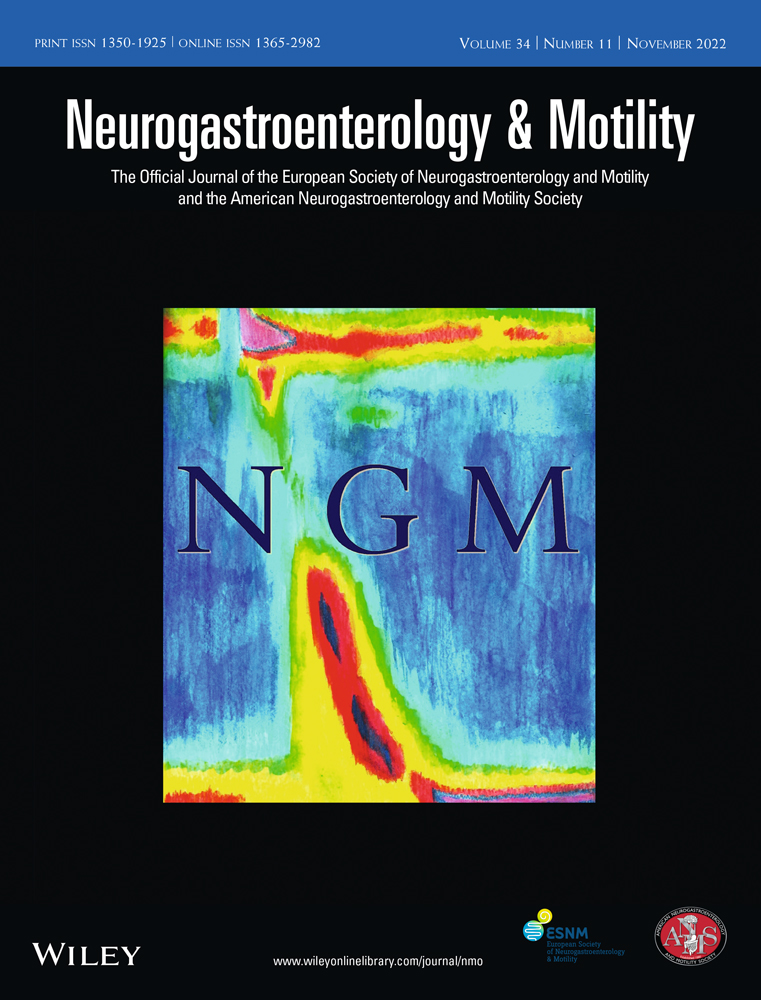Effect of hiatus hernia on reflux patterns and mucosal integrity in patients with non-erosive reflux disease
Guarantor of the article: Daniel Sifrim MD, PhD
Abstract
Background
Hiatus hernia (HH) contributes to development of gastroesophageal reflux disease, Barrett's esophagus and esophageal adenocarcinoma. This study was aimed to investigate the influence of HH on reflux patterns and distal esophageal mucosal integrity in non-erosive reflux disease (NERD).
Methods
We retrospectively analyzed PPI-refractory NERD patients referred to three tertiary referral centers who underwent high-resolution manometry and off-PPI 24-h impedance-pH monitoring (with or without bile spectrophotometry). Patients with HH ≥2 cm (HH group, n = 42) or no HH (non-HH group, n = 40) with similar esophageal acid exposure time (AET 6%–12%) were included.
Key Results
Age, gender, BMI, esophageal motility, AET, and esophageal clearance were similar between the two groups. The HH group had higher numbers of total reflux episodes (p = 0.015) with similar proportion of acid/non-acid reflux compared with the non-HH group. Mean nocturnal baseline impedance (MNBI) in the distal esophagus was significantly lower in the HH group than the non-HH group at both 5 cm (p = 0.002) and 3 cm (p = 0.015) above the lower esophageal sphincter. Multivariable regression analysis showed that HH, less non-acid reflux and lower post-reflux swallow-induced peristaltic wave index (PSPWI) were independently associated with lower MNBI. Among 31 patients tested with bile spectrophotometry, the HH group had significantly longer bile exposure time than the non-HH group (p = 0.011), and bile reflux inversely and significantly correlated with MNBI (rho = −0.75, p < 0.001).
Conclusions and Inferences
Hiatus hernia, less non-acid reflux and lower PSPWI were associated with lower MNBI. HH impairs distal esophageal mucosal integrity, the mechanism of which we speculate to be through excessive bile reflux.




